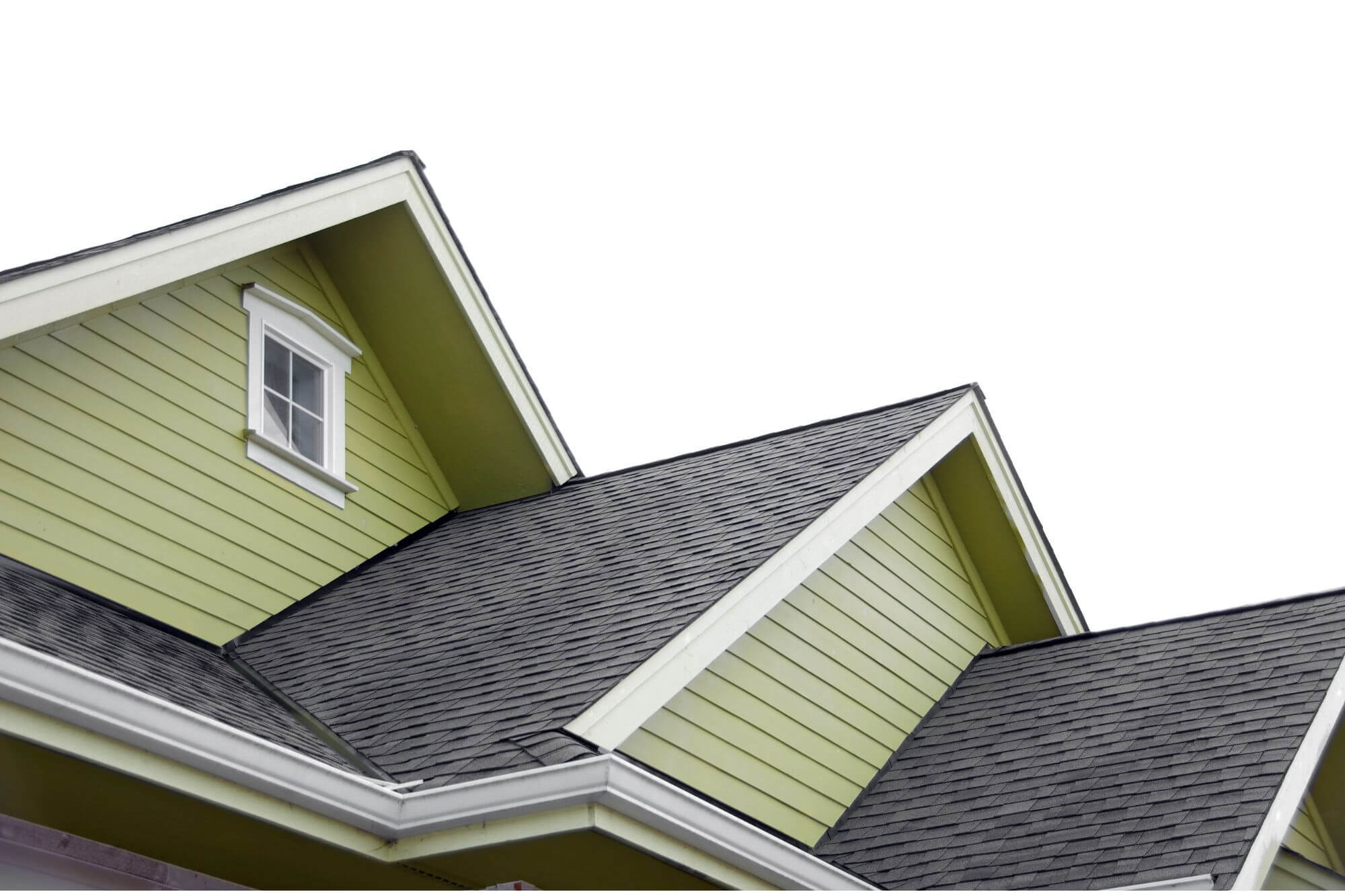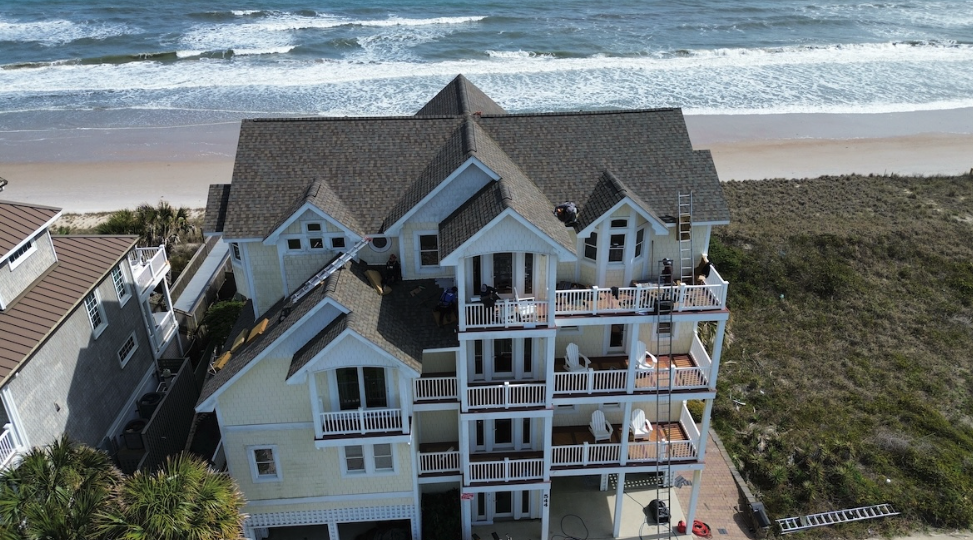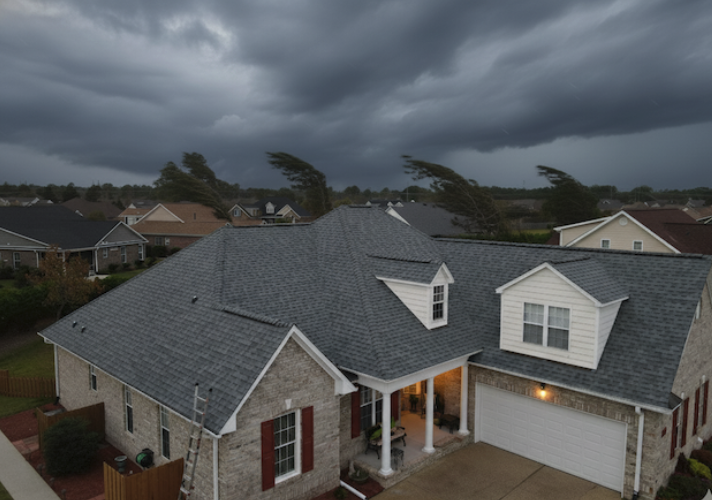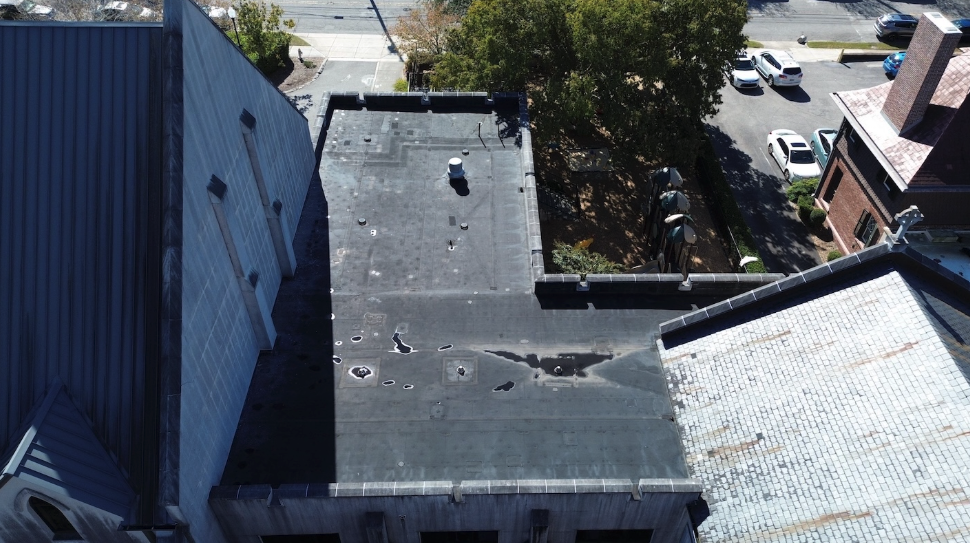Which Roofing Design Is the Most Hurricane-Resistant?
Ian Kaplan

If you live in a hurricane-prone area, one of your main concerns about your home’s stability is probably the integrity of your roof. Today, we will discuss what roofing materials and designs are best for homes in potential hurricane paths, and how you can make your home has a hurricane-proof roof that’s built to withstand inclement weather.
Let’s get started!
What Are the Main Concerns With a Hurricane?
When a hurricane strikes, what are the greatest dangers it poses to your home?
1. High Winds
The first is obviously the higher wind pressures. Sustained winds of over 74 mph can cause serious damage to homes, and hurricanes often have sustained winds of over 100 mph. Higher wind pressures can cause siding and roof material to be ripped from your home, thrown into the air, and become dangerous flying debris.
2. Debris
The second danger is flying debris. Debris from other buildings or trees can be picked up by the wind and hurled into your home, causing serious damage.
3. Flooding
The third danger is flooding. Storm surges from a hurricane can cause severe flooding, which can weaken the foundation of your home and lead to mold and mildew problems.
4. Power Outages
The fourth danger is power outages. Hurricanes can knock out power lines, leaving you without electricity for days or even weeks.
5. Fires
The fifth danger is fire. If power lines are downed, they can spark and start fires. You want a roofing material and roof shape that is fire-resistant so that it doesn’t ignite the rest of your home or collapse upon all of your belongings inside your home.
6. Rainfall
The sixth danger is intense rainfall or wind-driven rain. Hurricanes can bring days of continuous rain, which can lead to leaks in your roof and walls. Wind-driven rain can be especially dangerous since it increases the force of impact on your home, and it can impact your home at sideways angles, reaching underneath your roof overhangs or roof ridge.
7. High Water Levels
The seventh and final danger is high waves. If you live near the coast, the waves from a hurricane can cause serious damage to your home.
Is It Possible to Have a Hurricane-Proof Roof?
While it’s not entirely possible to put up an impenetrable forcefield around your home to protect it from Mother Nature, you can better protect your home by choosing the best roofing material. Some materials are better than others. For example, you probably don’t want wood shingles because wood shingles, while coated for waterproofing, are much more susceptible to rotting and leakage.
So, if wood shingles aren’t ideal, what is the best roofing material for a hurricane-proof roof?
Roofing Material
There are several different types of roofing materials that are commonly used in hurricane-prone areas. These materials include asphalt shingles, concrete or clay tiles, or metal roofing.
Asphalt Shingles
Asphalt shingles are a popular roofing material because they are relatively inexpensive and easy to install. However, asphalt shingle roofs are not the most durable option and can be easily damaged by high winds and flying debris. If you choose to use asphalt shingles, make sure to reinforce them with hurricane-proof straps or clips.
Asphalt shingles are a popular choice for homeowners because they are super affordable and very quick to install. Asphalt shingles also provide a more traditional look, and asphalt shingles are super easy to repair or replace.
Concrete Tiles
Concrete tiles are durable and fire-resistant, but they are also heavy and difficult to install. If you choose to use concrete tiles, make sure they are properly secured to your home. They aren’t the most hurricane-proof material, but they can get the job done.
Clay Tiles
Clay tiles are a more durable option than asphalt shingles, but they are also more expensive. Clay tiles can withstand high winds and flying debris, but if they are not installed properly, they can come loose and cause damage to your home.
Metal Roofing
Metal roofing is in the elite class of hurricane-proof roof materials. Metal roofs are one of the most durable roofing materials on the market, and can withstand high winds and flying debris. Metal roofing is also fire resistant, which can be a valuable asset in hurricane-prone areas.
More on Metal Roofs
Now that we know that metal roofs are one of the best options for hurricane-prone areas, let’s take a closer look at them.
There are two main types of metal roofing: corrugated metal roofs and standing seam metal roofs.
Corrugated Metal Roofs
Corrugated metal roofing is made up of panels that have been formed into wave-like shapes. This design gives the panels added strength and durability. Corrugated metal roofing is usually made from galvanized steel or aluminum, and can be painted to match the color of your home.
Standing Seam Metal Roofs
Standing seam metal roofing is made up of panels that have been joined together with seams that run vertically. This metal roof design helps to shed water and debris more effectively, and also makes the metal roof more resistant to high winds. Standing seam metal roofing is usually made from galvanized steel, aluminum, or copper.
Common Roof Metals
When choosing a metal roof for your home, it’s important to choose a material that is durable and will last for many years. A galvanized steel metal roof or an aluminum metal roof are both good choices. Copper is also a good option, but it is more expensive than the other two materials.
Choose Certified Roofing Materials
It’s also important to choose a metal roof that has been certified by the Underwriters Laboratories (UL). The UL is an independent testing agency that evaluates metal roof material for safety and quality. Products that have been certified by the UL have been tested to withstand high winds and flying debris.
Metal Roof Recap
To sum it up, if you live in a hurricane-prone area, metal roofing is one of the best options you can choose for your home. Metal roofs are durable, fire-resistant, and can withstand high winds and flying debris better than asphalt shingles. When choosing a metal roof, make sure to choose a material that is durable and will last for many years, and look for a product that has been certified by the Underwriters Laboratories.
Roofing Designs
There are four main types of roofing designs that are commonly used in hurricane-prone areas: hip, gable, flat, and shed. Each type has its own advantages and disadvantages when it comes to resisting hurricane-force winds.
Hip Roof
A hip roof is the most popular choice in hurricane-prone areas because it is very stable and can resist high winds well. However, hip roofs can be more expensive to build than other types of roofs and they may not provide as much ventilation or light as some other designs.
Gable Roofs
Gable roofs are also a good choice for resisting hurricanes because they are very strong and can stand up to high winds. They typically have a higher roof slope, and a triangle roof shape. However, a gable roof can be more vulnerable to wind damage if they are not properly braced, and it may not provide as much ventilation or light as some other designs.
Flat Roofs
Flat roofs are a good choice for resisting hurricanes if they are properly reinforced and have a strong foundation. However, flat roofs can be more vulnerable to wind damage if they are not properly braced, and they may not provide as much ventilation or light as some other designs. Also, the flat roof shape and lack of roof slope make it harder for the rain to sluff off the roof.
Shed Roofs
Shed roofs are the least popular choice in hurricane-prone areas because they are the weakest type of roofing design and can be easily damaged by high winds. However, shed roofs can be the cheapest type of roof to build and they provide good ventilation and light.
How You Can Prepare Your Home and Roof for Hurricane Season
If you live in an area that is prone to hurricanes, there are some things you can do to prepare your roof for the season.
Inspect Your Roof
The first step is to inspect your roof and make sure it is in good condition. Look for any loose or missing shingles, and make sure all of your roofing materials are in good condition. If you find any damage, make sure to repair it before hurricane season starts.
Reinforce Your Roof
The next step is to reinforce your roof. This can be done by adding hurricane straps or clips to your roof. Hurricane straps help to hold your roof in place if it is buffeted by high winds, and clips help to keep flying debris from damaging your roof.
If you need a roof replacement, don’t delay it. To make your home as hurricane-proof as possible, you have to start with a stable, hurricane-proof roof. A roof replacement is expensive, but not as expensive as replacing all of your belongings that suffer water damage from leaky, unstable roof material.
Clean Your Gutters
Another way to prepare your roof for hurricane season is to clean your gutters. Clogged gutters can cause water to back up and damage your roof, so make sure they are clear of debris before the storms start.
Trim Trees Near Your Home
If you have trees near your home, make sure to trim them before hurricane season. Falling branches can damage your roof, so it is important to remove any potential hazards before the storms hit.
Invest in Hurricane Shutters
Hurricane shutters can help to protect your windows from flying debris, and can also help to keep your home cooler during a storm. If you live in an area that is prone to hurricanes, investing in hurricane shutters is a good way to protect your home.
Have a Plan
Finally, it is important to have a plan in place in case you need to evacuate your home during a hurricane. Make sure you know where you will go and how you will get there, and make sure you have a supply of food and water in case you are stranded.
By following these steps, you can help to ensure that your roof is ready for hurricane season. If you take the time to prepare now, you can help to protect your home from damage during storms.
Hire a Professional Roof Inspection Company
If you want to make sure that your roof is hurricane-ready, you can hire a professional roof inspection company. A professional inspector will be able to spot any potential problems with your roof and will be able to recommend the best course of action.
Investing in a professional roof inspection is a good way to protect your home and peace of mind. Get a free inspection today from the local roofing experts at Summit Roofing & Construction.
What To Do if Your Roof Is Already Damaged
If your roof is already damaged, there are some things you can do to repair it.
Assess the Damage
The first step is to assess the damage. If you see any missing shingles or damaged areas, make sure to take note of them. You will also want to check for any leaks or water damage. Once you have a list of the damage, you can start to repair it.
Replace Shingles
If you have missing shingles, the first thing you need to do is find matching shingles to replace them. If you cannot find an exact match, you can use shingles that are of a similar color and style. Once you have the new shingles, simply remove the old ones and install the new ones in their place.
Replace Base Roofing Materials
If you have damage to the base layers of your roof, you may need to replace some of the roofing materials. This can be done by a professional roofer. They will be able to assess the damage and recommend the best course of action.
Fill Holes
If you have a leak in your roof, the first thing you need to do is find the source of the leak. Once you have found the leak, you can repair it by patching the hole or replacing the damaged shingles.
No matter what type of damage you have, it is important to get the roofing material fixed as soon as possible. The longer you wait to repair your roof, the worse the damage will become. By taking care of it now, you can help to prevent further damage and keep your home safe.
Get Started on Your Hurricane-Proof Roof Today!
Roofs are an important part of any home, and it is important to make sure they are well-maintained. Choosing the best roofing material and roof shape are important factors for preventing severe damage to your roof and to your home.
Get your roof inspected regularly by a professional roofing company like Summit Roofing & Construction. They’ll make sure your home is ready for hurricane season every year so that when a hurricane hits, you can feel more secure about the integrity of your home.
By following these tips, you can help to ensure that your roof is ready for hurricane season. Doing so will help to protect your home from damage during storms and hurricanes.








